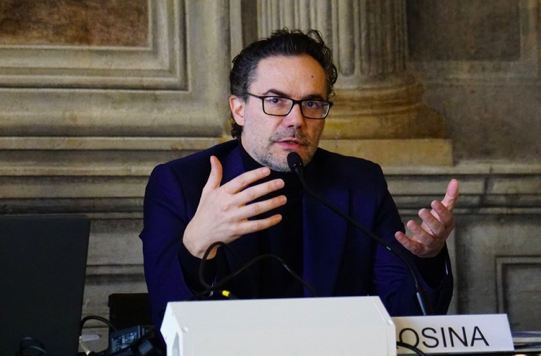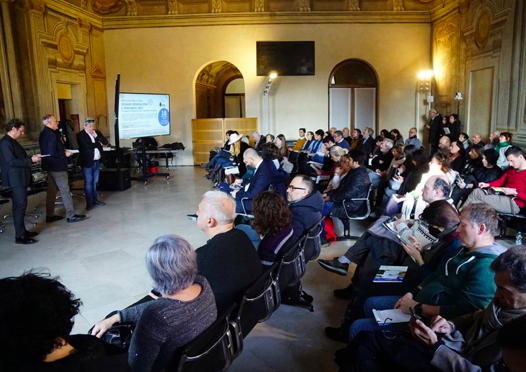Who are the NEETs? Within the public debate, NEETs are often made to coincide with two categories, very partial and different from each other: those who neither want to study nor work («because of their condition») and those who have tried but are vulnerable and discarded («victims of the system»). NEETs, on the other hand, are also: those who are actively looking for work (unemployed in the proper sense); who is waiting for an opportunity (evaluating offers, planning their own business, etc.); who takes care of the family full time (by choice or fallback); who carries out undeclared work; who has health problems.
 This clarification, explained by Dr. Alessandro Rosina, Professor of Demography and Social Statistics at the Catholic University of Milan and Scientific Coordinator of the Youth Observatory of the G. Toniolo Institute, opened the conference “Young generations and the NEET phenomenon – From intersectional needs to transversal skills” held on the 15th February 2023, in Bologna, inside the ‘Sala Anziani’ of Palazzo D’Accursio.
This clarification, explained by Dr. Alessandro Rosina, Professor of Demography and Social Statistics at the Catholic University of Milan and Scientific Coordinator of the Youth Observatory of the G. Toniolo Institute, opened the conference “Young generations and the NEET phenomenon – From intersectional needs to transversal skills” held on the 15th February 2023, in Bologna, inside the ‘Sala Anziani’ of Palazzo D’Accursio.
Organised by Lai-momo within the Project Direction Employment, dedicated to the digital skills of NEETs belonging to disadvantaged categories, the event brought together expert of this phenomenon, journalists who deal with issues related to work and new poverties, representatives of institutions, operators of public and private services who work in job orientation and accompaniment.
After the greetings from the Italian assessor Luca Rizzo Nervo, followed by the Director of the EEA & Norway Grants Fund for Youth Employment Gian Luca Bombarda together with president of coop. Lai-momo Andrea Marchesini Reggiani, Prof. Rosina introduced the topic by showing its complexity and illustrating in depth the Italian situation, one of the most worrying at the European level: «In 2008 we already had a higher percentage of NEETs than in other Countries, given that it has never decreased, demonstrating the incapacity of our system of acting on the phenomenon».
He reported the data of a survey on the perception of young Europeans of the factors hindering the entry into the world of work, explaining that «alongside indicators similar to other Countries, three indicators stand out and define the national situation: the lack of active policies in the work, the lack of effective guidance services and the absence of development policies». It also appears necessary to reverse the perspective of young people of being victims to the one of being subjects of value who can find the possibility of self-fulfillment and make their abilities available. The “waste” of young people is considered the main indicator to define how much a territory does not take care of its greatest wealth and does not compare with the reality.
Journalists Stefania Zolotti, director of SenzaFiltro – Notizie Dentro il Lavoro, and Maurizio Boschini, director of Cappello di Padre Marella, addressed the theme of the journalistic narration on young people, work and poverty. Bruna Zani, President of the G.F. Minguzzi, illustrated the recent protocol on NEETs signed by the Municipality of Bologna, the Metropolitan City and the Emilia-Romagna Region. The moderator Aurelio Luglio interviewed Dulia Krasnic and Umar Hayat, alumni of the courses held within the Project, who with their enthusiasm and commitment offered to the public of journalists and insiders a concrete cross-section of the difficulties related to integration but also a hopeful note.
The afternoon session, dedicated to projects aimed at job placement of NEETs and young people belonging to disadvantaged categories, has been a mix of interventions by professionals in public and private sector work support: Anna Michela Ferradini (Sportello Lavoro Comune di Bologna), Laura Tagliaferri (Informagiovani Comune di Bologna), Giacomo Sarti (Cefal – Gio-Net), Emanuela Ocello (Agenzia Lavoropiù), Ambrogio Dionigi (Insieme per il Lavoro), Nicola Cameruccio (Lai-momo) and Patrizia Paganini (Agenzia per il Lavoro della Regione Emilia-Romagna).
Pictures: Mathias Marchioni – coop. Lai-momo
Article written by Lai-momo


